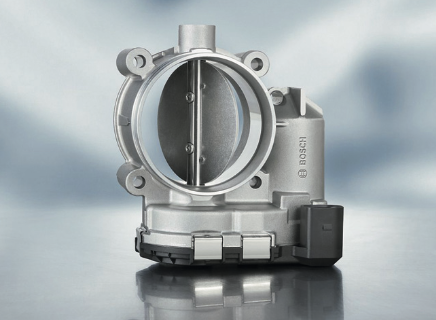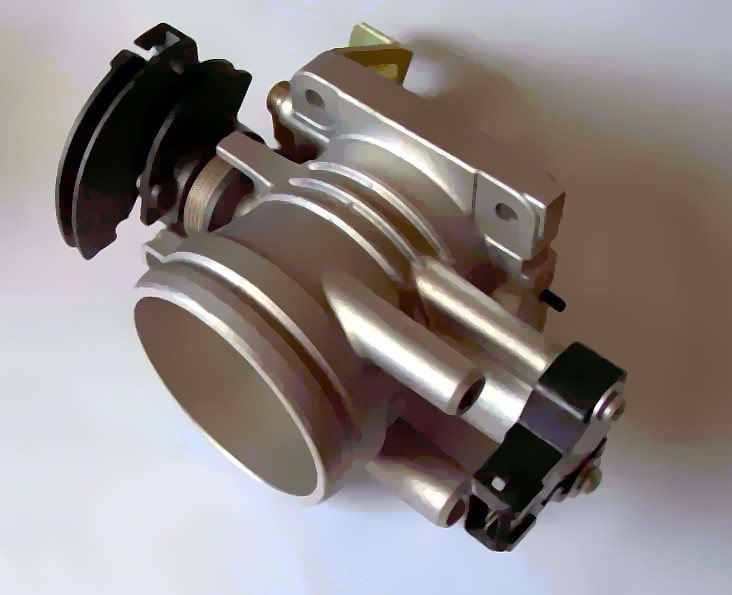A throttle controller and position sensor are important components in modern automobiles. In this blog post, we will discuss what a throttle controller and position sensor are, how they work, and why they are important.
Throttle Controller:
The throttle controller is an electronic device that controls the throttle response of a vehicle. It is also known as an accelerator pedal module or drive-by-wire system. The controller is responsible for interpreting the driver’s input and sending a signal to the engine’s electronic control unit (ECU) to adjust the throttle opening accordingly. In other words, the throttle controller is responsible for controlling the amount of air that flows into the engine.
There are two types of throttle controllers: electronic and mechanical. Mechanical throttle controllers use a cable to transmit the driver’s input to the throttle body. Electronic throttle controllers, on the other hand, use sensors and a control module to interpret the driver’s input and adjust the throttle opening accordingly.
Position Sensor:
The position sensor is a component that measures the position of the throttle pedal or throttle body. The sensor is usually mounted on the throttle body or the pedal assembly, and it sends a signal to the ECU that indicates the position of the throttle.
There are two types of position sensors: potentiometers and hall-effect sensors. Potentiometers are simple devices that use a variable resistor to measure the position of the throttle. Hall-effect sensors, on the other hand, use a magnetic field to detect the position of the throttle.
Why are they important?
Throttle controllers and position sensors are important components in modern automobiles because they improve drivability and fuel efficiency. Electronic throttle controllers provide smoother and more precise throttle response, which improves the driving experience. Additionally, electronic throttle controllers can be programmed to improve fuel efficiency by optimizing the throttle response based on driving conditions.
Position sensors are important because they ensure that the throttle is functioning properly. If the position sensor fails, the ECU may not be able to accurately control the throttle, which can lead to poor performance and decreased fuel efficiency. Additionally, position sensors are important for diagnostic purposes. If there is a problem with the throttle, the position sensor can provide valuable information to help diagnose the issue.
In conclusion, throttle controllers and position sensors are important components in modern automobiles. The throttle controller is responsible for controlling the amount of air that flows into the engine, while the position sensor measures the position of the throttle. These components improve drivability and fuel efficiency and are important for diagnostic purposes.

Throttle Controller:
The throttle controller is an important component in modern automobiles, as it replaces the traditional mechanical linkage between the accelerator pedal and the throttle body with an electronic signal. The electronic signal is generated by the throttle controller and transmitted to the engine’s electronic control unit (ECU), which then adjusts the throttle opening accordingly. This allows for smoother and more precise throttle response, which improves the driving experience.
Electronic throttle controllers can also be programmed to optimize the throttle response based on driving conditions, which can improve fuel efficiency. For example, the throttle response can be adjusted to be more sensitive during low-speed driving, which can improve acceleration and fuel efficiency. At higher speeds, the throttle response can be adjusted to be less sensitive, which can improve stability and fuel efficiency.
Position Sensor:
The position sensor is another important component in modern automobiles, as it measures the position of the throttle pedal or throttle body. The sensor is usually mounted on the throttle body or the pedal assembly, and it sends a signal to the ECU that indicates the position of the throttle. This signal is used by the ECU to adjust the throttle opening accordingly.
Potentiometers are the most common type of position sensor used in automobiles. They work by using a variable resistor that changes resistance based on the position of the throttle. As the throttle moves, the resistance of the potentiometer changes, and this change in resistance is detected by the ECU.
Hall-effect sensors are another type of position sensor used in automobiles. They work by detecting changes in a magnetic field. A magnet is mounted on the throttle body, and the hall-effect sensor detects changes in the magnetic field as the throttle moves. This information is then transmitted to the ECU.
In addition to their importance for improving drivability and fuel efficiency, throttle controllers and position sensors are also important for diagnostic purposes. If there is a problem with the throttle, the position sensor can provide valuable information to help diagnose the issue. For example, if the position sensor fails, the ECU may not be able to accurately control the throttle, which can lead to poor performance and decreased fuel efficiency. By detecting the problem with the position sensor, the mechanic can diagnose and fix the issue, improving the overall performance and efficiency of the vehicle.
Advantages of Throttle Controller and Position Sensor:
- Improved drivability: The electronic throttle controller provides smoother and more precise throttle response, which improves the driving experience.
- Better fuel efficiency: Electronic throttle controllers can be programmed to optimize the throttle response based on driving conditions, which can improve fuel efficiency.
- Diagnostic benefits: Position sensors are important for diagnostic purposes. If there is a problem with the throttle, the position sensor can provide valuable information to help diagnose the issue.
- Reduced emissions: Electronic throttle controllers can improve the efficiency of the engine, which can result in reduced emissions.
Disadvantages of Throttle Controller and Position Sensor:
- Cost: Electronic throttle controllers and position sensors are more expensive than their mechanical counterparts, which can increase the cost of the vehicle.
- Complexity: Electronic throttle controllers and position sensors are more complex than their mechanical counterparts, which can make them more difficult to diagnose and repair.
- Reliability: Electronic components are generally more prone to failure than mechanical components, which can lead to increased maintenance costs.
- Safety concerns: There have been instances where electronic throttle controllers have malfunctioned, causing unintended acceleration. This is a safety concern that needs to be addressed by manufacturers.
Overall, the advantages of throttle controllers and position sensors outweigh the disadvantages. These components improve drivability, fuel efficiency, and provide diagnostic benefits. While there are some concerns regarding cost, complexity, reliability, and safety, these issues can be addressed through proper design, testing, and maintenance.









